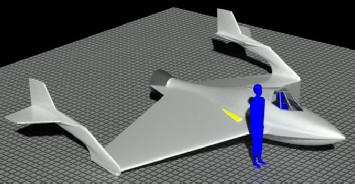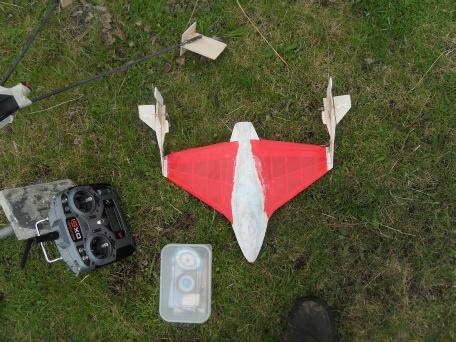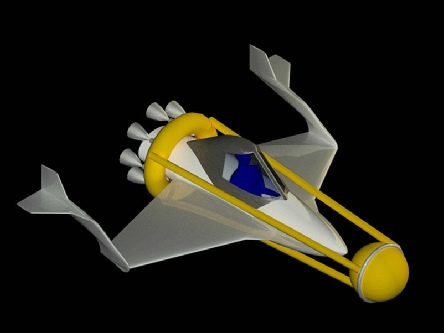

Aspirespace Rocket Engineering Society
Swift single-seat spaceplane
Ever since the Xprize competition was running, We've been inspired to design craft that could perform a suborbital flight to greater than 100 Kilometres apogee (the highest height achieved in the up-down trajectory).
100 Kilometres marks the official boundary of Space.
In order to design something that had a chance of ever being built, the mission was simplified to a single-person craft that was only partly reusable: a craft carried to high altitude by hydrogen balloon prior to launch from the balloon.
The craft incorporates a sharp nose, and underside concavity, and the forward part of the wings slides forwards to reveal sharp leading-edges during re-entry. This allows the craft to Waveride during the pullup manoeuvre from vertical fall to horizontal glide during re-entry: maximising supersonic lift significantly reduces the re-entry 'gees' suffered, as well as the maximum airspeeds and heating encountered.
Stabilising 'feathers' as on SpaceshipOne and SpaceshipTwo have been added to the wingtips; an autostable re-entry system designed by our hero Burt Rutan. Aspire didn't invent the aileron nor the parachute either, but it would be foolish not to have those; both Rutan's feathers and the parachute are fundamental additions that greatly enhance safety on this type of vehicle.
One would envision the Swift’s lifting balloon being launched off the North coast of Scotland, allowing the Swift to re-enter and glide to any airstrip or beach within glide range.
The craft was originally designed to use an uprated version of our nitrous oxide hybrids. Simulations showed that 600 litres of nitrous oxide was enough to reach Space (120 Kilometres apogee). The craft shown below used this propulsion system:
Swift Mark 5 variant:
The maiden flight of a small Swift Mk 3 test model can be seen here (double-click on the icon); our thanks to John Bonsor for his technical expertise fusing up the catapult release mechanism that fired the model off its A-frame carrier rocket at apogee.
The Swift model glided gently to the ground in a shallow turn. Despite the anhedral (negative dihedral) the turn was stable: the angle of bank remained constant as predicted (neutral spiral stability).

More details of the Swift project can be found in the following downloadable Powerpoint presentation (updated April 2017): Swift_project
A Swift 5 radio-controlled model debuted at the International Rocket Week in Scotland, and flew well after separating from its rocket booster. It needed slightly increased tailfin area to cope with a more rearward C.G. than earlier marks:





Swift Mark 6 variant:
It was decided to move the propulsion system offboard as with Spacedare, to allow different propulsion system choices. This also greatly reduces the re-entry ‘wingloading’ (ballistic coefficient). By removing the mass of the propulsion system and its mounting structure, the required wing area is significantly reduced, and an eVTOL landing system reduces this still further.
This redesign features a new cockpit, and a wrap-around separating propulsion system (again, shown yellowy/orange for clarity).
By removing the nitrous tank from the fuselage, the fuselage is now effectively empty, which allows re-entry Centre of Pressure wanderings to be re-trimmed simply by moving the pilot fore-aft in his/her chair.
To misquote Thomas More: “See me safe up: for in my coming down, I can shift (the C.G.) for myself.”
A vacant fuselage also allows a rear hatch.
Haven’t quite settled on the cockpit window material: flat panels or curved; seeking expert advice.













